![规范理论和现代粒子物理学导论(第1卷) [An Introduction to Gauge Theories and Modern Particle Physics Vol.1]](https://pic.tinynews.org/10104498/78ec9648-d65b-44b6-979e-2906b0351777.jpg)

具体描述
内容简介
《规范理论和现代粒子物理学导论(1卷)》分为两册,详细地介绍了粒子物理学的现代理论和实验。条理分明,表述连贯。作者以简明直观的方式,阐释隐藏在实验现象背后的深刻的物理原理,同时循序渐进地讲解从事粒子物理研究用到的现代方法。《规范理论和现代粒子物理导论(1卷)》收入了许多粒子物理领域的新成果,还有若干很有特色的议题,例如高阶弱电效应,夸克混合,喷流,深度非弹性轻子-强子散射,简单部分子模型的量子色动力学修正,以及量子色动力学的非微扰理论等。《规范理论和现代粒子物理学导论(1卷)》可以作为现代粒子物理学方向的研究生教材,对该领域的科研人员也有很好的参考价值。《规范理论和现代粒子物理学导论(1卷)》一册主要包括电弱相互作用,新的基本粒子的探索及其物理性质的研究,部分子的发现,以及简单部分子模型的构建和预测等。第二册在介绍了CP破坏之后,主要讲解量子色动力学及其在“硬”过程中的应用,同时也介绍了“软”强子物理和非微扰量子色动力学。内页插图
目录
PrefaceAcknowledgements
Notational conventions
Note added in proof: the discovery of the top quark (?)
Note added in proof: the demise of the SSC
1 Field theory and pre-gauge theory of weak interactions
1.1 A brief introduction to field theory
1.2 Pre-gange theory of weak interactions
1.3 The spin and isospin structure
1.4 Tests of the V-A structure and lepton universality
2 The need for a gauge theory
2.1 The intermediate vector boson
2.2 Towards a renormalizable theory
2.3 Gauge symmetry
2.4 Freedom to choose the gauge
2.5 Summary
3 Spontaneous symmetry breaking: the Goldstone theorem and the Higgs phenomenon
3.1 Spontaneously broken symmetries in field theory: Goldstones theorem
3.2 The Higgs mechanism
3.3 Unitarity and renormalizability
3.4 Suwmmary
4 Construction of the standard model
4.1 Model building (towards the standard model)
4.2 The standard model
4.3 Discovery of W and Z0
5 Lowest order tests of the SM in the leptonic sector
5.1 Phenomenology of purely leptonic reactions
5.2 A check of the minimal Higgs mechanism
5.3 Support for the SM from hadronic collider data
5.4 Concluding remarks
6 The Higgs boson
6.1 Introductory remarks
6.2 Higgs decay
6.3 Higgs production at the Z0 mass
6.4 Limits on the Higgs mass
6.5 Concluding comments
7 The standard model beyond lowest order
7.1 Radiative corrections
7.2 Renormalization and physical parameters
7.3 The effective fine structure constant
7.4 The muon lifetime revisited
7.5 Estimates of one loop corrections
7.6 Higher order corrections
7.7 Practical problems in testing radiative corrections
7.8 Strategies to overcome the imprecision in Mw
7.9 Testing the minimal Higgs mechanism
7.10 Beyond the standard model
8 e+e- physics and the standard model
8.1 Electron-positron storage rings
8.2 The new e+e- colliders: TRISTAN and LEP
8.3 e+e- physics at energies [[ Mz
8.4 e+e- and the standard model
8.5 LEP data near the Z0 peak
8.6 Determination of the SM parameters of the Z0
8.7 Neutrino counting
8.8 Asymmetries and polarization measurements at the Z0 peak
8.9 Conclusions
9 Extension to the hadrons; quark-lepton universality
9.1 Charm, bottom and top
9.2 Quark mixing
9.3 Electroweak interaction of the quarks
9.4 The GIM mechanism
9.5 Colour
9.6 Summary of the quark sector of the standard model
9.7 Quark masses and the KM matrix
10 Phenomenology of semi-leptonic reactions
10.1 Model independent tests
10.2 Parity violation in electron-nucleus scattering
10.3 Optical rotation
10.4 Summary
11 The discovery of the narrow vector resonances
11.1 Introduction
11.2 The new particles
11.3 Some qualitative features of QCD
11.4 Quark-lepton parallelism
11.5 Flavour classification of hadrons
11.6 The J/ψ and the OZI rule
11.7 Experimental status of the J/ψ spectroscopy
11.8 Properties of the J/ψ(3097) and ψ(3685)
11.9 Baryouic decay of J/ψ
11.10 The T family and its experimental status
12 Hidden flavour bound states
12.1 Quarkonium
12.2 J/ψ decays. Calculation of the widths
12.3 Determination of as
12.4 Leptonic widths
12.5 Exotics: glueballs, hybrids, etc.
12.6 ψ→π: a puzzle
12.7 Conclusions
13 Open heavy flavours
13.1 Discovery and basic properties of charm and bottom particles
13.2 Charm decay
13.3 B physics
13.4 Production of heavy fiavours
13.5 Heavy fiavours at LEP
13.6 Final comments
14 The heavy lepton τ
14.1 Introduction
14.2 Discovery of the τ lepton
14.3 Properties of the τ lepton
14.4 τ decay
14.5 The τ neutrino
14.6 Rare τ decays
14.7 Miscellaneous and conclusions
15 Towards the parton model deep inelastic scattering
15.1 Electron-muon scattering
15.2 Elastic electron-proton scattering
15.3 Inelastic electron-nucleon scattering
15.4 Inelastic neutrino-nucleon scattering
15.5 Deep inelastic scattering and scaling behaviour
15.6 Polarization effects in deep inelastic scattering
16 The quark-parton model
16.1 The introduction of partons
16.2 Antipartons
16.3 Partons as quarks
16.4 The detailed quark-parton model
16.5 Charged lepton induced reactions for Q2 of order M2z
16.6 Behaviour of the quark number densities as x → 0
16.7 The missing constituents--gluons
16.8 The parton model in polarized deep inelastic scattering
16.9 Appendix to Chapter 16: The patton model as an impulse approximation
17 Experimental tests of the quark-parton model
17.1 Deep inelastic scaling functions for Q2 [[ M2Z
17.2 Neutrino cross-sections in the quark-parton model for Q2 [[M2Z
17.3 Cross-sections in the quark-parton model for Q2 comparable with M2Z
17.4 Application of the parton model to related processes
Appendix 1: Elements of field theory
A1.1 Fields and creation operators
A1.2 Parity, charge conjugation and G-parity
A1.3 The S-matrix
Appendix 2: Feynman rules for QED, QCD and the SM
A2.1 Relation between S-matrix and Feynman amplitude
A2.2 QCD and QED
A2.3 The SM
A2.4 Some examples of Feynman amplitudes
A2.5 Colour sums
A2.6 The Gell-Mann SU(3) matrices
A2.7 The Fierz reshuffle theorem
A2.8 Dimension of matrix elements
Appendix 3: Conserved vector currents and their charges
References
Analytic subject index for vols. 1 and 2
前言/序言
for a book of its genre,our previous book,An introduction to gauoetheories and the"new physic"(1982)was a great success.It was not.alas,sold in airport lounges,but it did run to two additional printings(1983,198s),and to extensively revised editions in Russian(1990).and oin-Polish(1991).More importantly,it seemed to achieve the principal goal which we had set ourselves,namely,to present a pedagogical account ofmodern particle physics with a balance of theory and experiment,whichwould be intelligible and stimulating for both theoretical and experimental raduate students.We did not try to write a profound book on fieldtheory,nor a treatise on sophisticated experimental techniques.But wedid wish to stress the deep,intimate and fruitful interaction betweentheoretical ideas and experimental results.Indeed,for US,it iS just thisaspect of physics which makes it seem so much more exciting than say puremathematics our greatest pleasure came from the favourable reaction ofstudents who were working through the book and from those reviewerswho caught what we hoped was its essential flaV0ur——the writing createsthe reeling of an active progression of ideas arising from the repeatedinteraction of theoretical prejudice with experimental observation unlikemost textbooks,it is highly readable,and makes everything appear simpleand obviousWeII,the last comment iS surely an exaggeration but that was our aim.用户评价
对于我这样在理论物理领域摸爬滚打多年的研究者来说,一本好的教材是极其宝贵的。而《规范理论和现代粒子物理学导论(第1卷)》无疑是我近期读到的一本佳作。它对规范理论的阐述,无论是从概念的引入,还是到数学框架的构建,都显得严谨而又不失清晰。作者对于对称性原理的强调,以及如何从中导出规范场的思想,处理得非常到位,为后续理解标准模型打下了坚实的基础。我特别欣赏书中在介绍各个基本粒子及其相互作用时,所采用的由浅入深的逻辑结构。它并没有简单地罗列事实,而是追溯了概念的起源和发展的过程,这使得我们不仅能掌握现有的知识,更能理解其背后的思想精髓。同时,作者在数学推导上也显得得心应手,关键步骤的解释都十分详尽,足以让具有一定数学背景的读者轻松跟进。这本书作为一本导论,其深度和广度都恰到好处,既有理论的深度,又不失对现代粒子物理发展前沿的关注。我强烈推荐给所有对该领域感兴趣的同行。
评分作为一位对物理学史和理论物理学交叉领域有浓厚兴趣的读者,我发现《规范理论和现代粒子物理学导论(第1卷)》提供了一个非常独特的视角。这本书不仅仅是在讲解规范理论本身,它巧妙地将理论的发展与现代粒子物理学的研究现状紧密结合起来。我惊讶于作者能够如此流畅地在抽象的理论框架和具体的实验现象之间切换,让读者能够清晰地看到理论的预测是如何被实验所验证,或者理论的局限性是如何驱动新的研究方向的。书中对一些关键的历史时刻和重要的实验发现的叙述,都充满了引人入胜的故事性,让我仿佛置身于那个激动人心的探索时代。同时,作者对于一些前沿问题的探讨,也显得非常审慎和有见地,既展现了理论的威力,又点明了当前研究的挑战。这本书的文字风格非常吸引人,它既有学术的严谨,又不乏文学的感染力,读起来让人爱不释手。
评分这本《规范理论和现代粒子物理学导论(第1卷)》带给我的是一种沉浸式的学习体验。我一直在寻找一本能够真正“带我入门”的书,而不是仅仅罗列一些知识点。这本书做到了!它不是一本简单的教科书,更像是一次思想的旅程。作者通过生动的语言和循序渐进的讲解,让我能够直观地感受到规范理论的优雅和强大。我不再只是被动地接受公式,而是开始理解这些公式背后的物理意义和哲学思考。例如,在解释规范不变性时,作者通过类比生活中的一些现象,将抽象的数学概念变得触手可及。这种“可视化”的学习方式,让我能够更深刻地记忆和理解。这本书的内容组织也十分合理,从最基础的概念出发,逐步深入到更复杂的理论。每一次阅读,都感觉自己对粒子物理学的理解更进了一步。我尤其赞赏书中对历史发展的梳理,让我能够看到理论是如何一步步演变和完善的,这对于理解现代物理学的全貌至关重要。
评分我一直认为,理解现代物理学最困难的部分往往在于其抽象的数学语言和概念。而《规范理论和现代粒子物理学导论(第1卷)》在这方面做得尤为出色。这本书的讲解方式非常“友好”,它会花大量的篇幅去解释每一个核心概念的由来和意义,而不是直接给出定义。对于一些复杂的数学工具,作者也给出了直观的解释和物理上的类比,这对于我这样的非专业读者来说,简直是福音。我不再是被动地记忆公式,而是开始真正理解它们的“为什么”和“是什么”。这本书的节奏把握得非常好,不会让你感到 overwhelmed,而是让你一步步建立起对规范理论的信心。我尤其喜欢书中对基本粒子相互作用的描述,它将那些微观世界的“搏斗”描绘得生动形象。这本书让我第一次真正感觉自己能够触碰到现代粒子物理学的核心,而不是隔靴搔痒。我非常期待能从这本书中获得更深入的理解。
评分这本书真是让我眼前一亮!作为一个对粒子物理学一直充满好奇但又觉得望而却步的普通读者,我尝试了许多科普读物,但往往要么过于浅显,要么就跳跃得太快,让我跟不上思路。而这本《规范理论和现代粒子物理学导论(第1卷)》则给了我一种全新的体验。它没有上来就抛出一堆复杂的公式和概念,而是非常耐心、细致地引导我一步步走进这个迷人的世界。作者似乎非常理解初学者的困境,他用一种非常清晰、有逻辑的方式,将一些看似高深莫测的概念,比如规范不变性,一步步分解,并且用一些恰当的比喻和类比来帮助我理解。我尤其喜欢其中对早期粒子物理学发展历程的介绍,那种历史的厚重感和科学家们探索未知的激情,让我对这个领域产生了更深的敬意。而且,这本书的排版和插图也很是精美,读起来一点都不枯燥,仿佛在和一位渊博的老师在进行一次轻松而富有启发性的对话。我迫不及待地想继续阅读下一卷,去探索更深层次的奥秘!
评分书很好,印刷清晰纸质不错
评分评价很高的一本书,买了一套
评分发评价拿京豆换优惠券
评分影印版图书质量不如原版书, 但便宜.
评分这本书很好,我很喜欢,对初学者比较实用!
评分京东300减100活动相当给力
评分这是我的评价,请不要察看,不要回复,不要点赞,不要收藏,不要引用,不要转载,不要传播,实际情况请看日后追评。
评分影印版图书质量不如原版书, 但便宜.
评分发评价拿京豆换优惠券
相关图书
本站所有内容均为互联网搜索引擎提供的公开搜索信息,本站不存储任何数据与内容,任何内容与数据均与本站无关,如有需要请联系相关搜索引擎包括但不限于百度,google,bing,sogou 等
© 2025 book.idnshop.cc All Rights Reserved. 静思书屋 版权所有

![凝聚态物理学中的量子场论(第2版) [Quantum Field Theory in Condensed Matter Physics(Second Edition)] pdf epub mobi 电子书 下载](https://pic.tinynews.org/10104521/7151963c-1558-4b27-9ae2-dc7f2f73b67b.jpg)
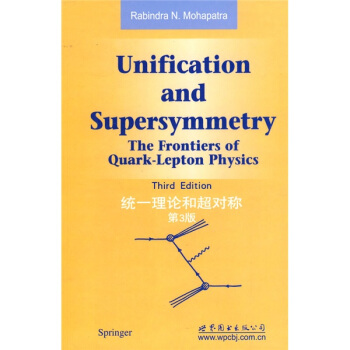
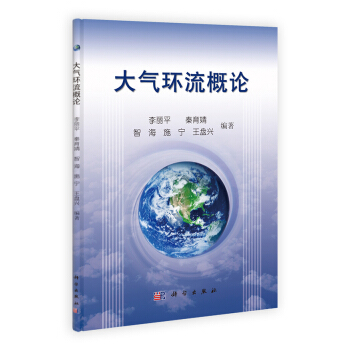
![中外物理学精品书系·引进系列(19):受控核聚变中的等离子体与材料的相互作用(影印版) [Plasma-Material Interaction in Controlled Fusion] pdf epub mobi 电子书 下载](https://pic.tinynews.org/11300129/rBEhWFIUU-wIAAAAAAMp7O9ZpJwAACR6ACWhdoAAyoE577.jpg)
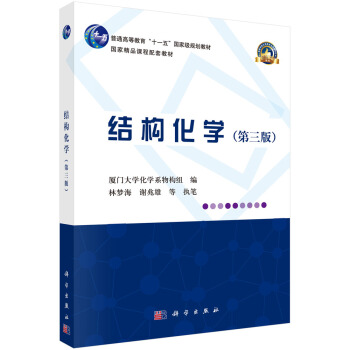
![椭圆曲线的有理点 [Rational Points on Elliptic Curves] pdf epub mobi 电子书 下载](https://pic.tinynews.org/11647744/54e1b516Nc907b294.jpg)
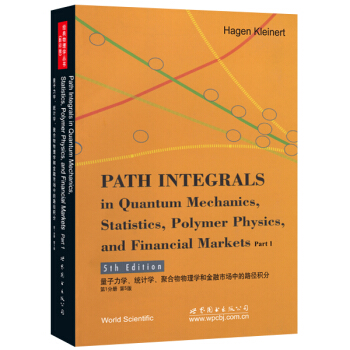
![量子群入门 [A Guide to Quantum Groups] pdf epub mobi 电子书 下载](https://pic.tinynews.org/10184614/52569431-fb1f-4b41-9463-fd47031ffa99.jpg)
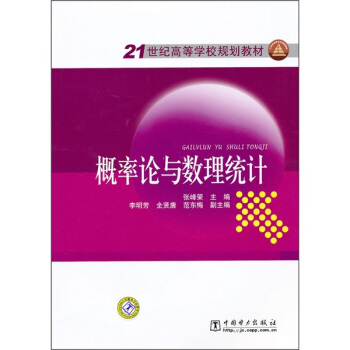
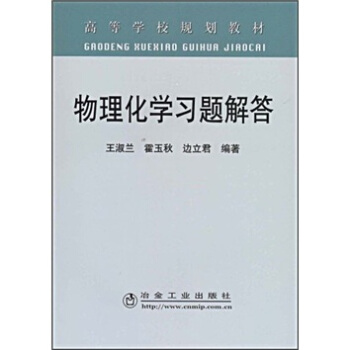
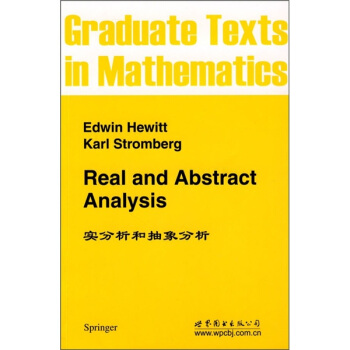
![线性代数群 [Linear Algebraic Groups] pdf epub mobi 电子书 下载](https://pic.tinynews.org/10857737/fcb2f257-227e-43db-bed7-c73076c42824.jpg)
![经典物理学丛书(影印版):简明统计力学 [Statistical Mechanics in a Nutshell] pdf epub mobi 电子书 下载](https://pic.tinynews.org/11316302/rBEhU1I4U_oIAAAAAAI69WH8VOoAADQsAOJkQ4AAjsN983.jpg)
![初等数列研究与欣赏(上) [Primary Sequence Study and Appreciation] pdf epub mobi 电子书 下载](https://pic.tinynews.org/11879285/56e7d759Nb9bfd2cf.jpg)
![除尘工程技术手册 [Handbook on Dust Removal Engineering Techology] pdf epub mobi 电子书 下载](https://pic.tinynews.org/11920147/5739c28cNcdf78f19.jpg)
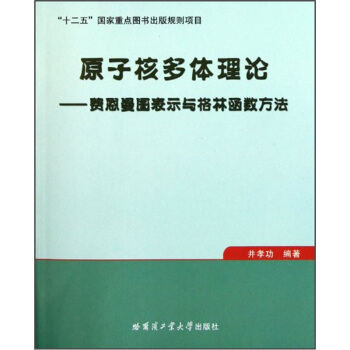
![紧复曲面(第2版) [Compact Complex Surfaces(Second Enlarged Edition)] pdf epub mobi 电子书 下载](https://pic.tinynews.org/10904479/29188fd0-2c57-4e1e-8b2f-1f3d4b31bce4.jpg)

![化归与归纳·类比 联想(珍藏版) [Reduction And Induction Analogy Association] pdf epub mobi 电子书 下载](https://pic.tinynews.org/11883761/56f8fee3Nc9f86c4f.jpg)
![超对称和弦论(英文版) [Supersymmetry and String Theory] pdf epub mobi 电子书 下载](https://pic.tinynews.org/10184594/e5b89bc9-3b3b-4fad-8861-ede9b682c51f.jpg)